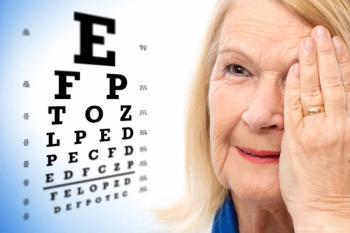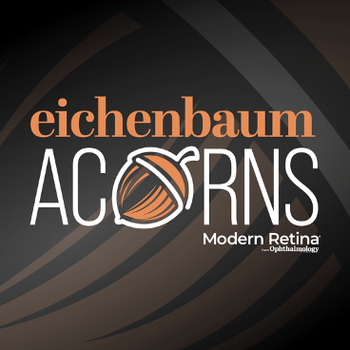
Diagnosing AMD for the non-retina specialist
Optometry Australia’s chairside reference suggests limiting the use of terms such as “age-related maculopathy,” “wet,” and “dry” AMD, and instead use the Beckman classification
Optometry Australia has developed an AMD chairside reference in consultation with a member-based working group comprised of experienced practitioners. It provides an evidence-based approach to current best practice in the diagnosis and management of AMD.1
(In the U.S., the most recent guideline from the American Optometric Association [AOA] was reviewed in 2004.) The AOA does recommend antioxidant nutritional supplementation (e.g., vitamins C, E, beta-carotene and zinc), as they may prevent or impede the progression of AMD. The anti-oxidants in these supplements may convert free radicals into stable compounds before they interact with cell membranes to produce damage.
Optometry Australia’s chairside reference suggests limiting the use of terms such as “age-related maculopathy,” “wet,” and “dry” AMD, and instead use the Beckman classification.2
The Beckman Initiative for Macular Research classification scheme is based on clinical exam (using an ophthalmoscope or slitlamp with accessory lenses) or evaluation of a fundus photo. In patients older than 55, small drusen are less than half the vein width (< 63 μm), medium drusen are between half and oneâfull width of the vein (63–125 μm), and large drusen are wider than 125 μm.
Of particular importance is the increased risk (to about 47%) of developing late stage AMD if a person has both large drusen and pigmentary abnormalities in both eyes (which is considered intermediate AMD).
Table 1 shows the 5-year risk of progression to late AMD.3
Finally, the Beckman classification scheme renames geographic atrophy as complete retinal pigment epithelium and outer retinal atrophy in the absence of choroidal neovascularization.
OD assessments equal to ophthalmologists’
A recent U.K. study found optometrists were as effective at identifying developments in AMD as ophthalmologists, and that “shared care with optometrist monitoring quiescent wet AMD lesions has the potential to reduce workload in hospitals.”4
The study found 84.5% of optometrists (n = 48) and 85.4% of ophthalmologists (n=48) classified lesions correctly. One finding of the study of potential interest, however, is that optometrists were more cautious and more likely to reclassify a lesion as re-activated.
These results clashed with an earlier study, however, that found optometrists were less able to recognize macular edema and drusen, although they “perform satisfactorily” in identifying the symptoms.5
At the time, it was suggested additional training may improve diagnostic outcomes. That may have been borne out by a study6 published last year. In that, it was suggested that optical coherence tomography (OCT) improves optometrists’ diagnostic performance compared to fundus observation alone. These initial results suggest that OCT provides valuable additional data that could augment caseâfinding for glaucoma and retinal disease.
Patient education is key
Patient education at the time of diagnosis is a crucial component of treatment, but also involves a significant amount of chair time. (It is often recommended that family members be present during the initial consultation.) Not all patients with AMD will develop vision loss, and not all patients who do develop vision loss will go blind, two points that need to be emphasized when talking to patients.
Finally, eyecare professionals in Australia considered poor care pathways, people with AMD having a poor disease understanding / denial, and cost of care / lack of funding, as the most significant barriers to AMD care; they considered shared care model, access, and communication as the most significant enablers to good AMD care.7
References:
1. Hart KM, Abbott C, Ly A, et al. Optometry Australia’s chairside reference for the diagnosis and management of age-related macular degeneration. Clin Exper Optom 2019. DOI:10.1111/cxo.12964
2. Ferris FL, Wilkinson CP, Bird A, et al. Clinical classification of ageârelated macular degeneration. Ophthalmology 2013; 120: 844–851
3. Ferris FL, Davis MD, Clemons TE, et al. A simplified severity scale for ageârelated macular degeneration: AREDS Report No. 18. Arch Ophthalmol 2005; 123: 1570–1574.
4. Reeves BC, Scott LJ, Taylor J, et al. Effectiveness of community versus hospital eye service follow-up for patients with neovascular age-related macular degeneration with quiescent disease (ECHoES): a virtual non-inferiority trial. BMJ Open 2016;6:e010685. doi:10.1136/bmjopen-2015-010685
5. Muen WJ, Hewick SA. Quality of optometry referrals to neovascular age-related macular degeneration clinic: a prospective study. JRSM Short Rep. 2011;2(8):64. doi:10.1258/shorts.2011.011042
6. Jindal A, Ctori I, Fidalgo B, Dabasia P, Balaskas K, Lawrenson JG. Impact of optical coherence tomography on diagnostic decision-making by UK community optometrists: a clinical vignette study. Ophthalmic Physiol Opt. 2019;39(3):205–215. doi:10.1111/opo.12613
7. Jalbert I, Rahardjo D, Yashadhana A, Liew G, Gopinath B (2020) A qualitative exploration of Australian eyecare professional perspectives on Age-Related Macular Degeneration (AMD) care. PLoS ONE 15(2): e0228858. https://doi.org/ 10.1371/journal.pone.0228858
Newsletter
Keep your retina practice on the forefront—subscribe for expert analysis and emerging trends in retinal disease management.









































